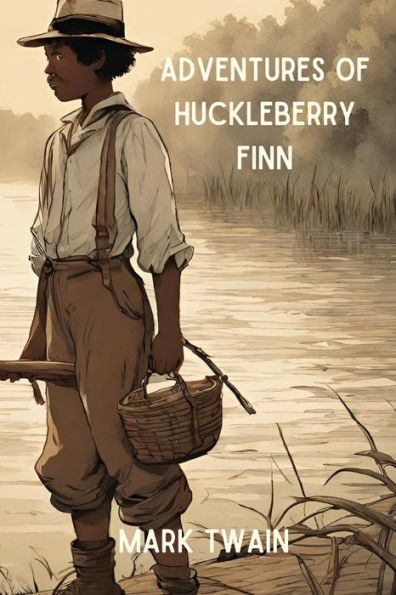James by Percival Everett flips the script on an American classic as Huck Finn steps to the side and Jim takes center stage in a powerful and often very funny, story of family, home and freedom. Everett joined us live at The Grove to talk about language and storytelling, his sense of humor (and its origins), philosophy, […]
On Jackson Island, Huck's solitude is shattered when he encounters Jim, a runaway slave seeking refuge from the chains of bondage. Their clandestine camaraderie blooms into a daring river escape, and the raft becomes their humble vessel navigating the waters of camaraderie, moral complexities, and societal prejudices.
The arrival of the King and the Duke injects the narrative with dark comedy and danger. The river, once a sanctuary, transforms into a stage for deceptive performances, forcing Huck and Jim into a precarious dance of survival. Twain masterfully weaves their encounters into a narrative that echoes the moral conflicts of the antebellum South.
As the raft drifts downstream, the return of Tom Sawyer brings youthful exuberance and misguided heroism. Tom's grandiose plan to liberate Jim adds layers of absurdity and social commentary, reflecting broader societal absurdities. The trio's antics on the river become a microcosm of the societal struggles Twain astutely satirizes.
The riverbanks become a theater of moral dilemmas for Huck, inviting readers to grapple with the ethical quandaries of loyalty, friendship, and racial prejudices. The journey's culmination reveals the true nature of freedom and the complexities of morality. Twain leaves readers with a denouement that is both poignant and open-ended, a reflection of enduring societal struggles and the eternal quest for individual liberty. "Adventures of Huckleberry Finn" is a symphony of adventure, moral awakening, and societal critique, where every ripple in the water mirrors the intricate layers of human experience.
On Jackson Island, Huck's solitude is shattered when he encounters Jim, a runaway slave seeking refuge from the chains of bondage. Their clandestine camaraderie blooms into a daring river escape, and the raft becomes their humble vessel navigating the waters of camaraderie, moral complexities, and societal prejudices.
The arrival of the King and the Duke injects the narrative with dark comedy and danger. The river, once a sanctuary, transforms into a stage for deceptive performances, forcing Huck and Jim into a precarious dance of survival. Twain masterfully weaves their encounters into a narrative that echoes the moral conflicts of the antebellum South.
As the raft drifts downstream, the return of Tom Sawyer brings youthful exuberance and misguided heroism. Tom's grandiose plan to liberate Jim adds layers of absurdity and social commentary, reflecting broader societal absurdities. The trio's antics on the river become a microcosm of the societal struggles Twain astutely satirizes.
The riverbanks become a theater of moral dilemmas for Huck, inviting readers to grapple with the ethical quandaries of loyalty, friendship, and racial prejudices. The journey's culmination reveals the true nature of freedom and the complexities of morality. Twain leaves readers with a denouement that is both poignant and open-ended, a reflection of enduring societal struggles and the eternal quest for individual liberty. "Adventures of Huckleberry Finn" is a symphony of adventure, moral awakening, and societal critique, where every ripple in the water mirrors the intricate layers of human experience.

Adventures of Huckleberry Finn (Annotated)
324
Adventures of Huckleberry Finn (Annotated)
324
Product Details
| ISBN-13: | 9782487116887 |
|---|---|
| Publisher: | Jason Nollan |
| Publication date: | 01/01/2024 |
| Pages: | 324 |
| Product dimensions: | 6.00(w) x 9.00(h) x 0.73(d) |
| Age Range: | 2 - 5 Years |
